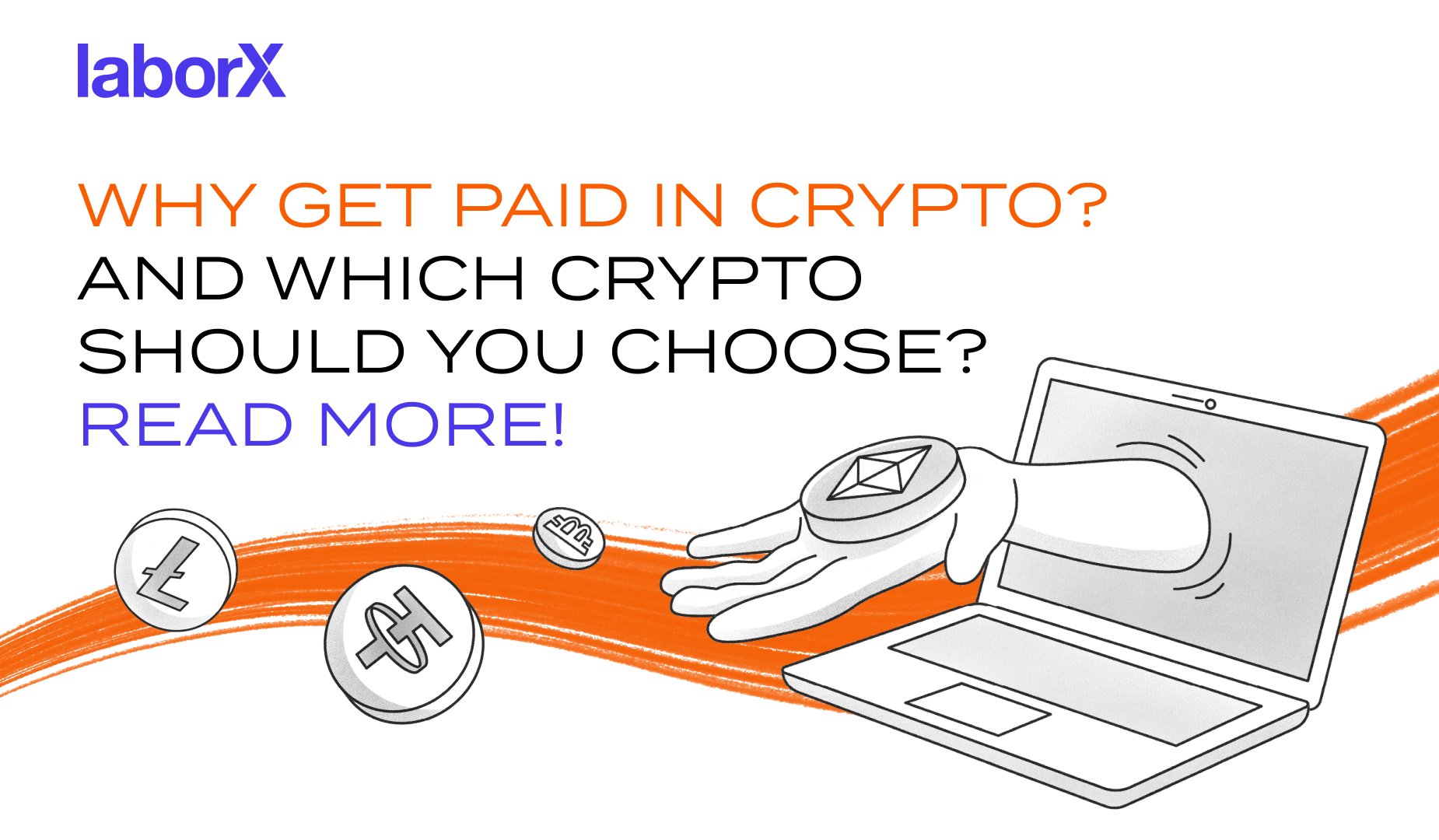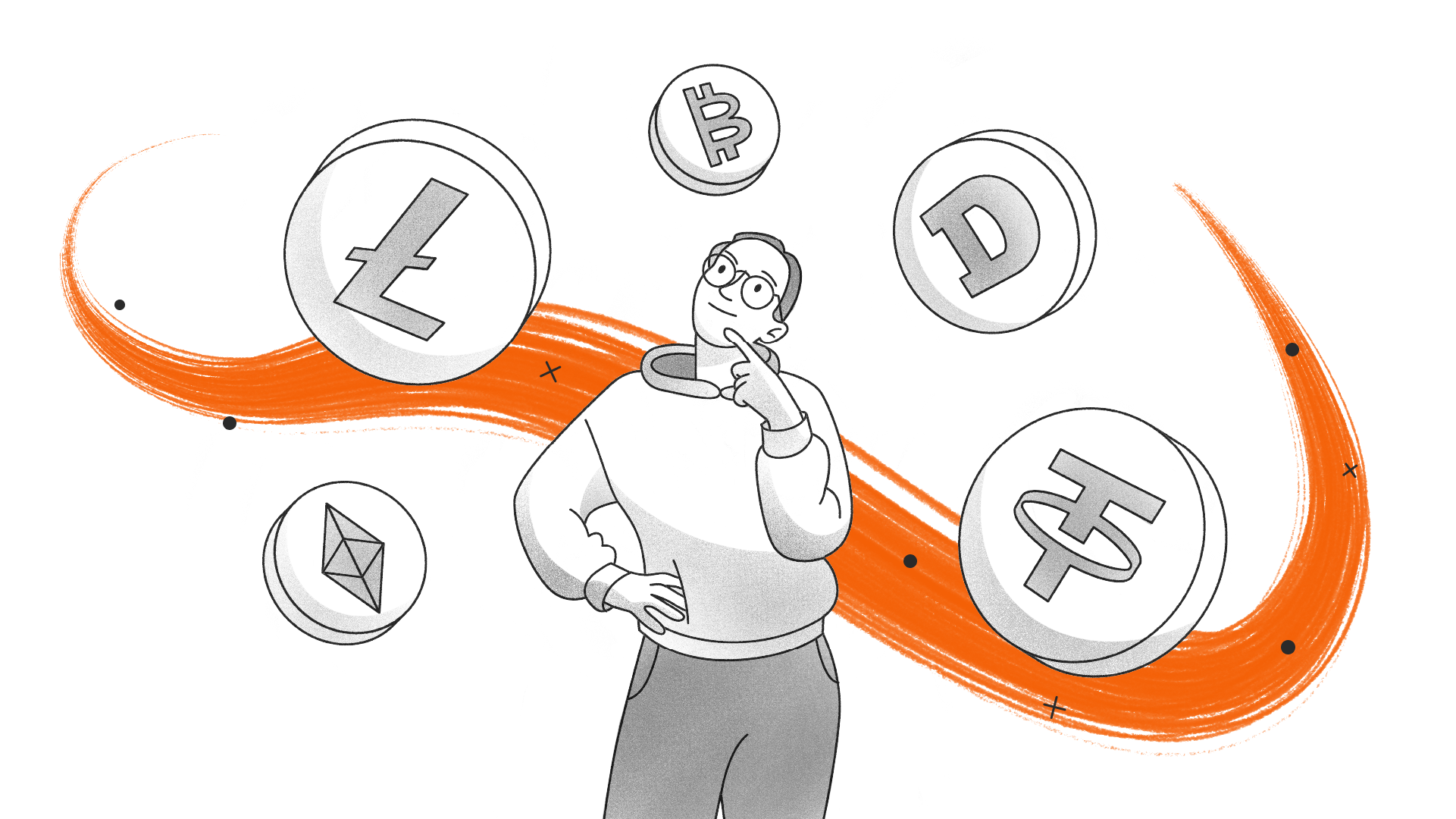
Embracing Change: HR in the World of Digital Assets
Hotcoin’s HR shares her journey from traditional industries to the world of Web3 and crypto, highlighting key insights on thriving in this space.
Read
LaborX and an increasing number of other platforms and companies enable you to get paid in cryptocurrency for your work. But why would you want to get paid in crypto – and with so many tokens out there, which ones might you choose?
The blockchain world works in a very different way to the traditional financial system. As a result, it has advantages and disadvantages. Many freelancers, though, will find that the benefits outweigh the downsides. There are several good reasons why you may want to accept crypto payments – especially if you’re working for companies based in countries other than your own. These include:
Additionally, platforms like LaborX not only feature crypto payments, but use the blockchain to enforce digital work agreements. These ensure that workers get paid automatically when they complete a task, reducing the possibility of fraud or non-payment.

When deciding which cryptocurrency would be best to transact in, at first it can seem a little overwhelming. There are literally thousands of cryptocurrencies and tokens in existence, across a number of different blockchains. For the sake of simplicity however, let's breakdown the fundamentals here very quickly.
Cryptocurrency is the term used to describe digital currency, which is secured on a blockchain. There are many different cryptocurrencies across many different blockchains. For example, the Bitcoin blockchain’s native coin is bitcoin, or BTC; Litecoin’s native token is Litecoin, or LTC; and Ethereum’s native token is Ether, or ETH. Each of these blockchains also have tokens that are not the native asset of the blockchain, but rather a coin that can be used and traded on platforms built on top of these blockchains. For example, tokens like USDT, USDC and Dai can be used and hosted on the Ethereum blockchain.
Crypto freelancing platforms typically only offer a handful of these currencies, generally including the most popular and widely-supported tokens. If you’re working for different organisations, though, you might be offered (or may request) payment in any of thousands of different coins, depending on your preference. Again, if you aren’t familiar with the space, it may seem overwhelming; so let's break down the most widely used currencies to help explain things further.
Here’s a rundown of five of the most popular coins, and why you might want to get paid in them:
Bitcoin (BTC) was the first ever cryptocurrency, or form of peer-to-peer digital cash – that is, online money that does rely on any banks, payment processors, or other third parties. It remains the largest digital asset by total market cap, the best-known crypto, the most popular, the most secure, and the most widely supported across the world.
Bitcoin is a little like the US Dollar of the crypto world. It’s the reserve currency, and the most trusted asset in the space. It tends to be the basis of investors’ digital asset portfolios. Although it fluctuates in value (without any central bank to backstop it, its price is determined solely by supply and demand), it’s less volatile than alternative, or 'altcoins'. Because of these properties, it has become known as ‘digital gold’.
If you’re going to get paid in any cryptocurrency, bitcoin is usually a very good starting point. Of all the crypto in existence, it’s the one that is most easily convertible, whether to fiat currencies (like USD, EUR, GBP, and so on) or other cryptocurrencies. If you’re planning to hold your BTC for the long term, it’s the least likely to disappear or be regulated out of existence: there’s simply too much interest and infrastructure that has been built around it, while its regulatory status is now relatively clear in most jurisdictions.
However, Bitcoin is a little slower to use than other cryptocurrencies, and the transaction fees might be slightly higher than most (though not all) alts - meaning it may not be suitable if you’re only getting paid a few dollars or so at a time.
Ethereum (ETH) is the second-largest cryptocurrency after bitcoin, and the next best-known. While bitcoin was created as digital cash (or digital gold, as it has become), ETH serves a different purpose. Ethereum is a smart contracts platform that is used to build decentralised applications (dApps) of all kinds: software that runs on the blockchain and that cannot be shut down or interfered with.
Ethereum is the foundation for a huge ecosystem of dApps, of many different types, but largely decentralised financial (DeFi) platforms. Just as Bitcoin enables users to send and receive money on a peer-to-peer basis, these dApps allow users to access all kinds of financial services – exchanges, borrowing and lending, stablecoins, derivatives, and more – without third parties intervention. ETH is the fuel of this huge, thriving ecosystem, and is required to pay the transaction fees or ‘gas’, on every blockchain operation.
ETH is therefore another strong choice to accept as a currency of payment, especially if you are working within the Ethereum ecosystem. There is a huge amount of interest around Ethereum and DeFi, and the platform underpins many decentralised Web3 services. So long as these exist, there will be demand for ETH. All of this activity makes ETH another highly liquid, widely-supported digital asset, though it is somewhat more volatile than BTC. However, ETH's recent move to deflationary mechanics (as a portion of the gas fees on every transaction is now ‘burned’, or removed from supply) means it has gained the title of ‘Ultrasound money’, suggesting it may yet prove more attractive than BTC to many people.
One caveat is that Ethereum can be expensive to use when the network is busy. Because the platform only has limited capacity, even simple transactions can be quite costly at times of peak use.
Litecoin (LTC) was created to be the ‘digital silver’ to Bitcoin’s digital gold. It was launched in 2011 and was designed to be more accessible, faster, and cheaper to use than Bitcoin.
While Bitcoin has a total supply of 21 million BTC and 10-minute block times, Litecoin has a supply of 84 million and 2.5-minute block times. It also has a different mining algorithm to Bitcoin (Scrypt, instead of SHA-256), which makes it a little easier to mine – though specialist hardware is still required.
As one of the oldest cryptocurrencies, Litecoin has a large community, and is widely supported by exchanges. Its speed and lower fees make it a useful alternative to BTC for moving relatively small amounts of money quickly. At the time of writing, it can cost just $0.01-0.02 to make a Litecoin transaction, while Bitcoin can cost $2-3 and beyond, when the network is busy.
Finally, Litecoin’s developers have proven to be faster at implementing new features, and so the ecosystem has served as a kind of ‘sandbox’ for innovation. Litecoin now supports confidential payments, for example.
One drawback of using LTC is that as a smaller-cap crypto, it is much more volatile than BTC or ETH, which has also made it popular among speculators and traders.
Dogecoin (DOGE) was created as a joke coin back in 2013. The creators of Dogecoin wanted to make crypto more fun and accessible than Bitcoin, so they based it on the popular Shiba Inu meme of a dog, accompanied by humorous slogans.
Dogecoin has since developed into a blockchain that has one-minute block times and low transaction fees, meaning it is very fast and cheap to use. It also has an extremely high supply compared to BTC or even LTC. There are currently around 133 billion DOGE, with 5 billion added to the supply every year in the form of mining rewards. This means that it’s easy for users to acquire a large number of coins. Becoming a DOGE millionaire (or ‘Dogenaire’) would cost around $70,000 at current prices, rather than $80 million for LTC, and in the past was much easier, since DOGE traded at tiny fractions of a penny for much of its existence.
The early emphasis on meme culture, rather than financial speculation, meant that DOGE built a large and strong community, with excellent network effects. Consequently, it was – and still is – widely used for tipping on social media platforms. Nearly 10 years later, the crypto is here to stay – and remains in the top 10 thanks to support from the likes of Elon Musk. While DOGE is volatile, you might consider it for smaller payments, or if you just want to add an element of fun to your crypto portfolio.
Cryptocurrencies have a reputation for fluctuating sharply in value. As such, stablecoins were designed to fix that problem, offering the price stability of fiat currencies (generally the US dollar) with the benefits of being hosted on the blockchain. Today, stablecoins such as USDC, USDT, BUSD, Dai, and more are a vital part of the crypto ecosystem.
Unsurprisingly, stablecoins are popular for payments, since they’re pegged to USD. They’re widely supported (especially USDT, USDC, and Dai), and are readily usable with DeFi and other services. You won’t benefit from any upside in terms of wild volatility, but neither are you at risk from market crashes - unless a de-pegging occurs. Moreover, if your local national currency is suffering from high rates of inflation, then there’s a strong case for storing some funds digitally in US dollars, the world’s reserve currency.
Outside of this list of 5, there are, of course, many other cryptos to choose from.
You can start your research by checking out sites like CoinMarketCap to learn about the top coins to help make your decision of which you should transact in easier moving forward.

Hotcoin’s HR shares her journey from traditional industries to the world of Web3 and crypto, highlighting key insights on thriving in this space.
Read
Discover how Web3 is reshaping HR practices with insights from a leading expert in the field.
Read
Discover Base's innovative L2 solution addressing scalability, security, and user experience challenges in crypto. Learn about Base Incubator by LaborX, fostering growth and innovation within the Base ecosystem.
Read